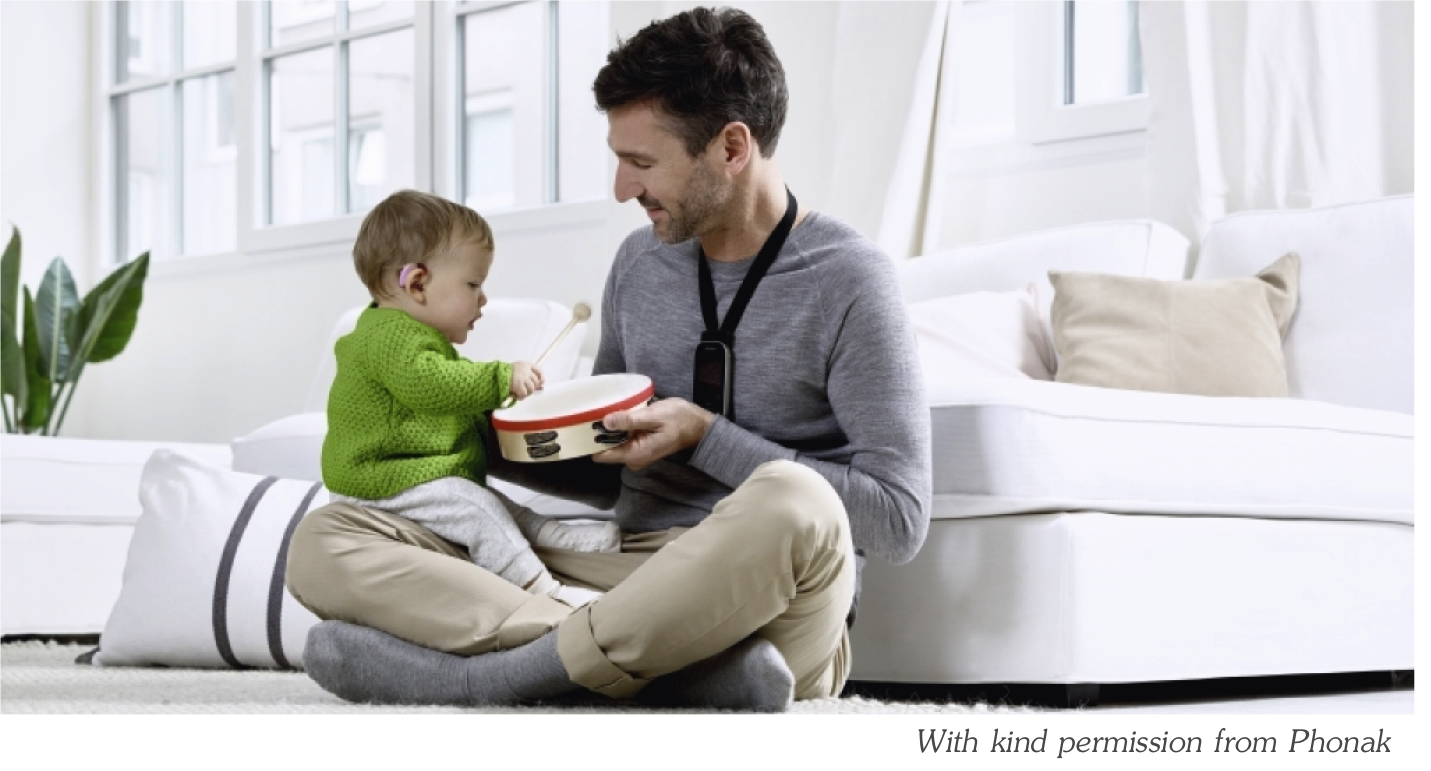Music to promote early language
|
|
Listening environment
Be close and avoid background noise. The further you are away from your child, the quieter your voice will be. Being close to your child, will give the best opportunity to hear your voice clearly. Hearing aids and Cochlear Implants make all sounds louder, not just your voice. This means that if you sing with your child with the television on or the washing machine going round, these sounds will be made louder too, making it much harder for your child to listen and make sense of the words. Children are not able to make sense of words they have missed in the same way that adults can, as their auditory neurological network is not fully developed (Cole & Flexer 2011). Studies have shown that background noise has a far greater impact on children's understanding of speech compared to adults (Klatte et at, 2010). Here are some top tips for interacting with your child and some simple steps that can be taken to improve the listening environment. Some young children will benefit from assistive listening devices such as radio aids. A study by the Ear Foundation and NDCS (2017) showed that parents considered there to be many benefits of using radio aids in certain situations on a daily basis. As well as improving access to speech over distance and providing a clearer voice when listening in noise, radio aid use resulted in an increase in adult words, child vocalisations, conversational turns and language opportunities. More information about Assistive Listening Devices and the Listening Environment can be found in the Understanding Hearing Loss MESHGuide.
References Cole, E. B. & Flexer, C. (2011) Children with hearing loss, developing listening and talking. San Diego, CA: Plural Publishing. Klatte, M., Lachmann, T., Meis, M. (2010) ‘Effects of noise and reverberation on speech perception and listening comprehension of children and adults in a classroom- like setting.’ Speech Perception and Understanding 12. pp. 270-82. The Ear Foundation & NDCS (2017) Using radio aids with pre-school children [Online] Available at: https://www.ndcs.org.uk/media/1822/ear_foundation_using_radio_aids_with_preschool_deaf_children.pdf [Accessed: 12 February 2021]. |




